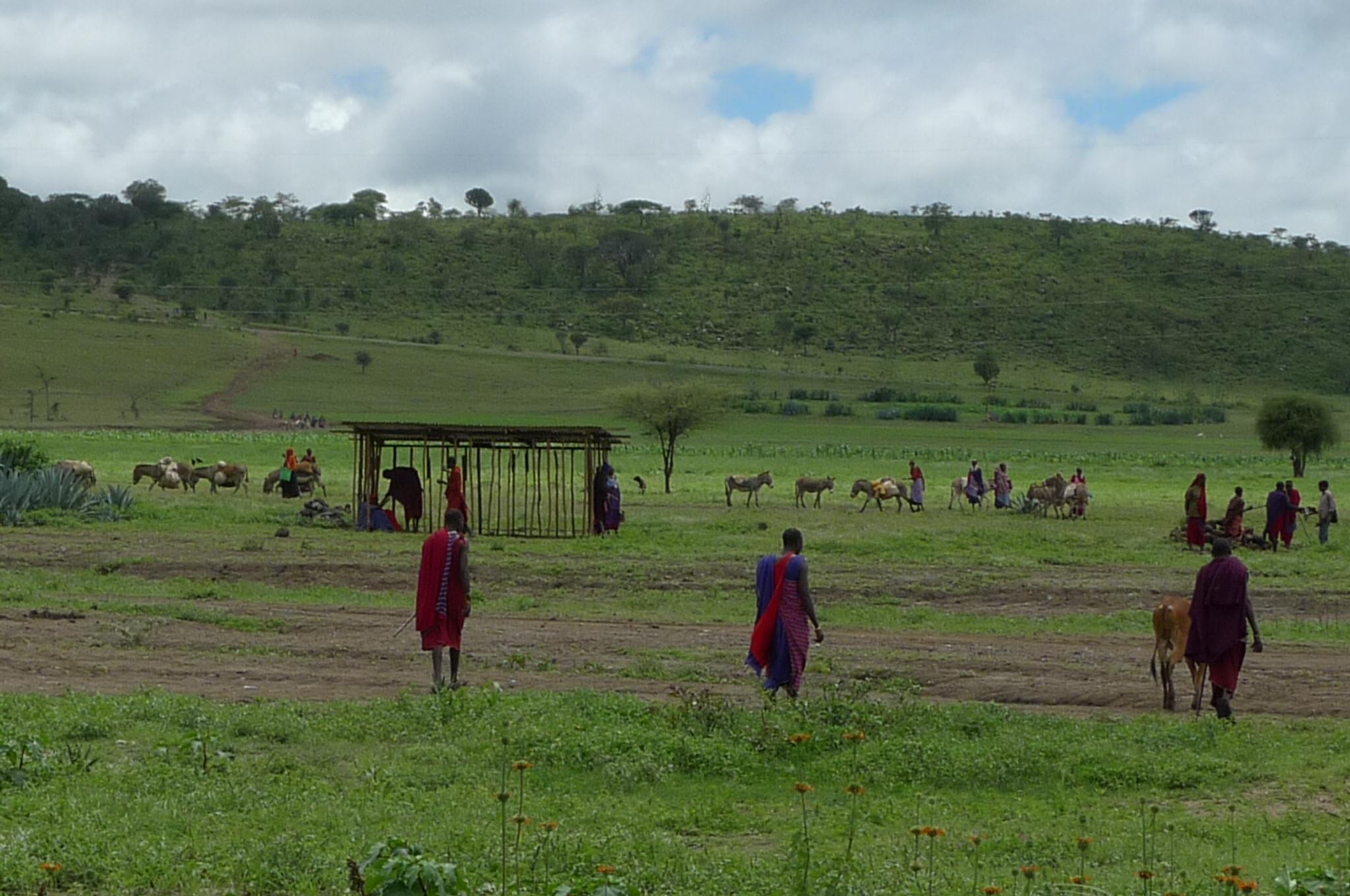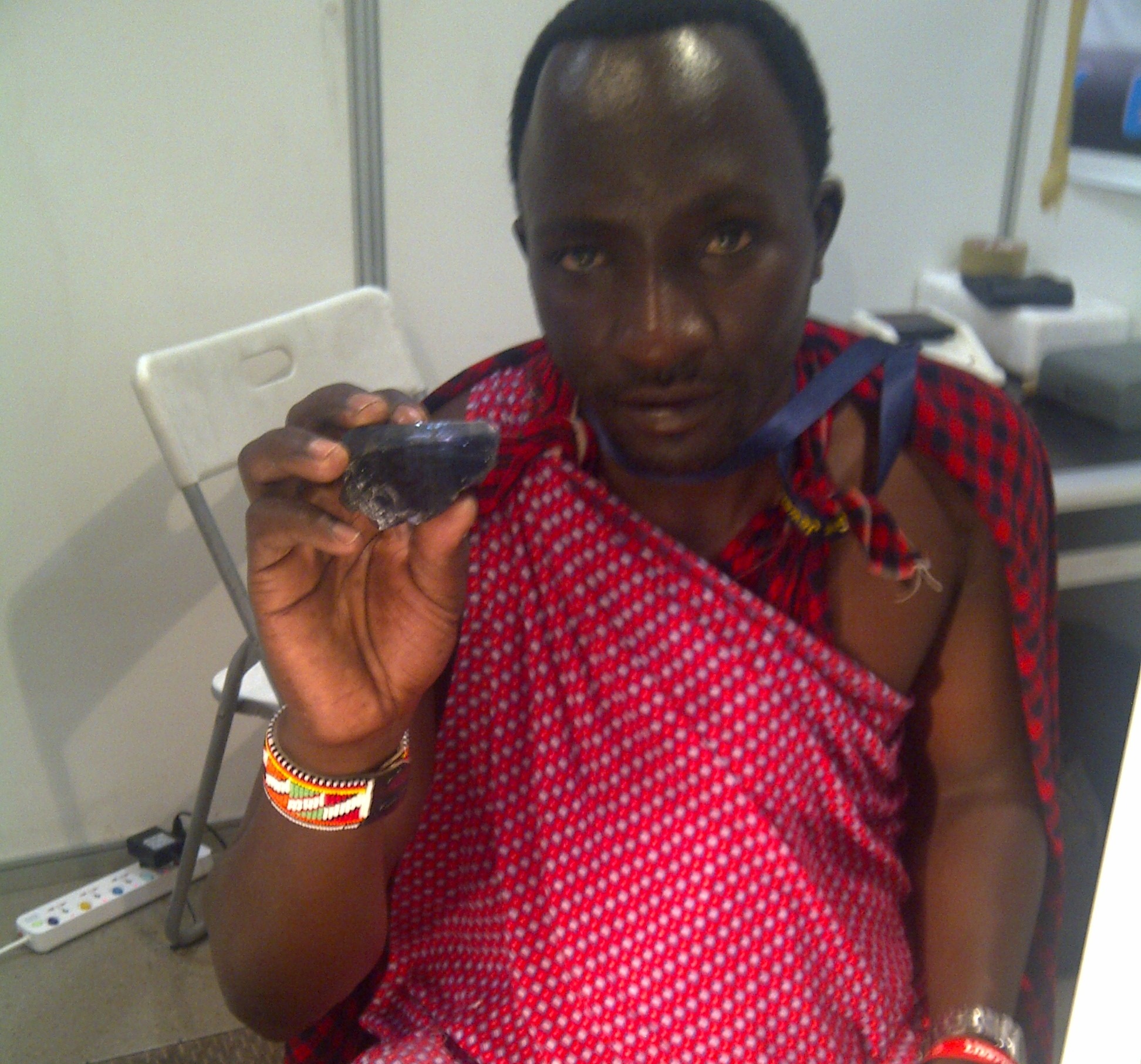Tanzanite Hunting in Tanzania
Tanzania is home of the famed Mt. Kilimanjaro, the proud Masai, and its namesake gem: tanzanites.
I went to Arusha, North East Tanzania, a land of much gemstone mining, but this trip to Tanzania was unlike most of my other trips. I went to the mines, as usual, to meet the dealers and watch the miners, and hand-selecting stones for my jewelry. This time, however, I was a guest of the government, and was surprised to be reunited with some of my distinguished GIA colleagues, now experts in their fields!
The Ministry of Energy & Minerals invited me and others to visit the First Annual Gem show and discuss gemstone mining in the country. The country’s tanzanites – amazing stones of deep blue with purple overtones – had been discovered only in this country relatively recently (1967), and the government is very aware of how it must develop this industry and not lose it to foreign prospectors (see my blog entry for my visit to Madagascar where tourmalines are now lorded over by foreigners). For one thing, the Tanzanian government is fostering their own gemstone cutting industry and bans all export of rough tanzanites.
I’m jumping ahead in my blog post here, but I’m excited to say that my GIA colleagues and I had an extraordinary opportunity to select and buy rough tanzanites during our week as guests of the government – a rare and legal window opened to us.
We first begin at the annual gem show in Arusha, in northern Tanzania. The dealers showed amazing specimens of stones – not just tanzanites, but also morganites, spessartite garnets, chrome tourmalines, diamonds, rubies,….. However, these dealers all knew the value of their exclusive tanzanites and others so no bargains found here.
Afterward, I also wandered through the gem-cutting neighborhood of Arusha. If you have an authentic tanzanite, it was likely cut here!
Also in Arusha, I had the pleasure of meeting and dining with Asha, an extraordinary woman of 90 who had the energy and persona of someone half her age. She began as a gemstone miner herself, and now owns and manages several mines. She belongs to the Association of Women Miners of Tanzania and there is where I met her.
Her story is so amazing…Only in Africa you can meet people with such an interesting an unusual life: started smuggling gemstones from Tanzania to Kenya when she was young, her boss forced her to hide the gemstones inside her flesh, in her leg. At one point, she became then a pearl hunter and learned how to free dive for pearls. She then managed to buy a mine and mined it with her three sons for many years. Two years ago, while in the jungle where she lives, she was bit by a very dangerous snake and almost died. She was in coma in the jungle for a few days until one of her sons found her and took her to hospital. During those days in the jungle, some thieves took all her money and all the property title documents for her mines. She stayed in hospital for one year, fighting against death. She has since recovered and is fighting to regain her land. The people who stole her property papers sold some of her land to the biggest tanzanite miner.
At the Arusha bus station where we took a small public van to go to the lake. She arranged for me and my son to take an impromptu safari through some unforgettable Masai homelands. One of the most striking memories was coming across these 3 boys by the side of the road. As part of their crossing over to adulthood, they were circumcised, and as their culture dictates, they were cast out of the community to roam and survive on their own until they were healed into adult men.
Back in town, we joined some government officials as well as other GIA colleagues to head to the backcountry for the mines. The mines are in the Masai homelands in the Mererani foothills before Mt. Kilimanjaro. Like on my past trips, I saw mines that were crude and not without personal peril, and were entirely dependent on human labor to extract the valuable gemstones. A blackboard, ostensibly for tracking the safety of the workers, lists workers above and below ground, those absent, and what was quickly erased: the number of workers who died.
Mines are holes that reach 300 meters deep, accessed almost entirely by ladders. I tried going down 20-30 meters, but it became so dark and hot and claustrophobic that I could not go further. No visitor was able to get down much further.
These vertical tunnels have horizontal offshoot galleries so men enter one by one, and then spread out underground. A man outside the mine entrance labors to work the rigged pulley contraction to hoist up bags of debris, scooped out by hand below.
Outside, another miner cuts the rope and gets the bag with debris.
Above ground, it was a day off for many workers. They live in company towns around the mines and had heard of our arrival and clamored to offer us some gemstones “found independently”. I examined them but they were not to the quality I required.






















